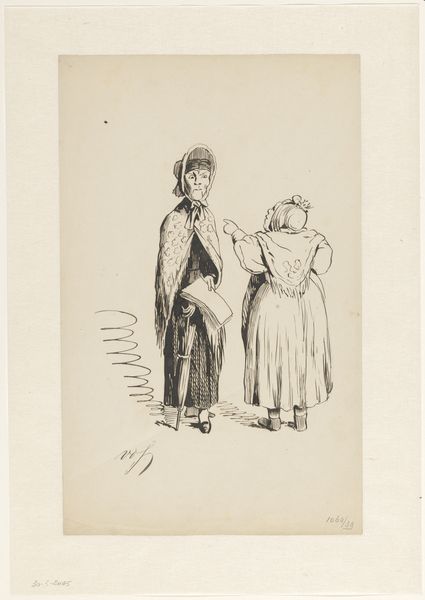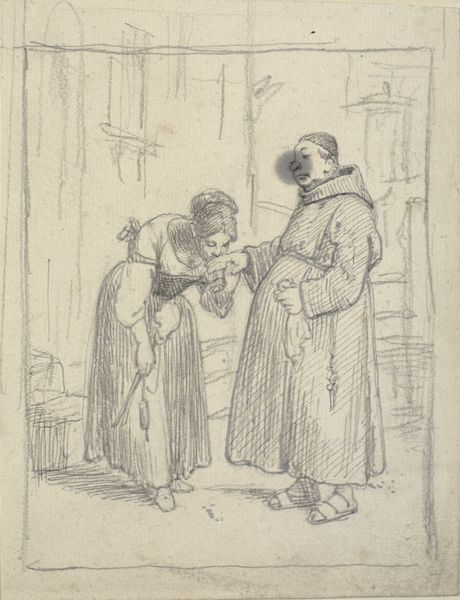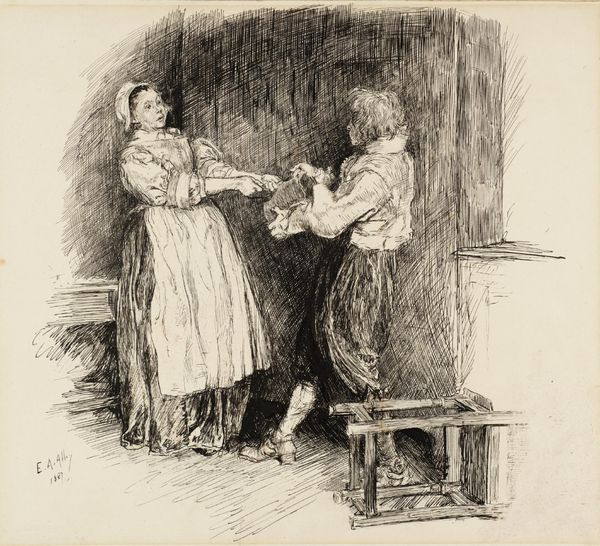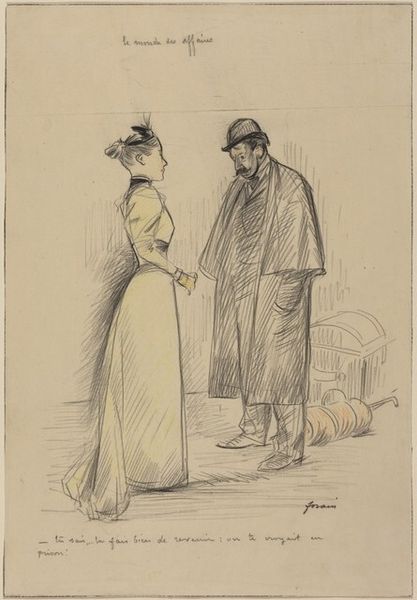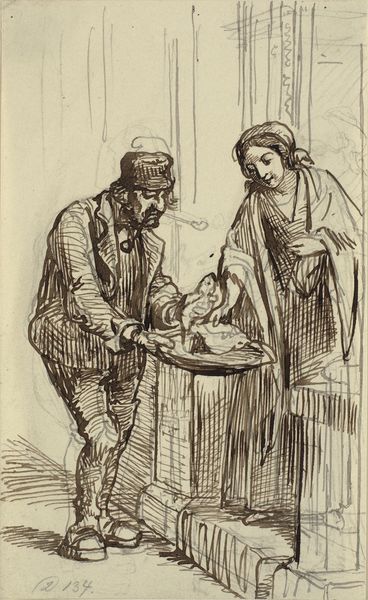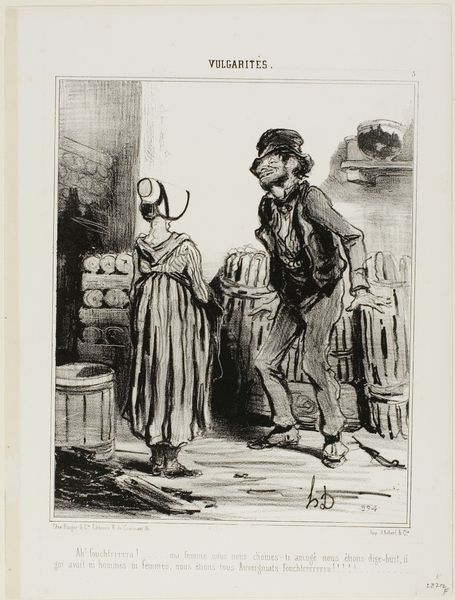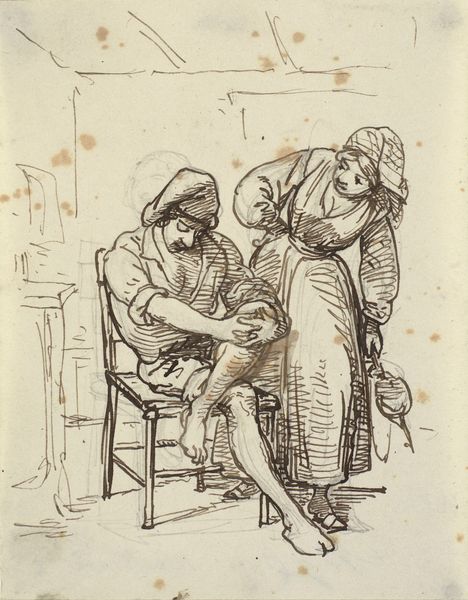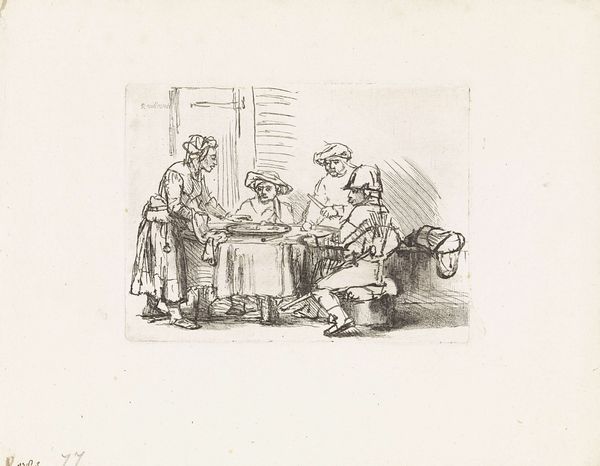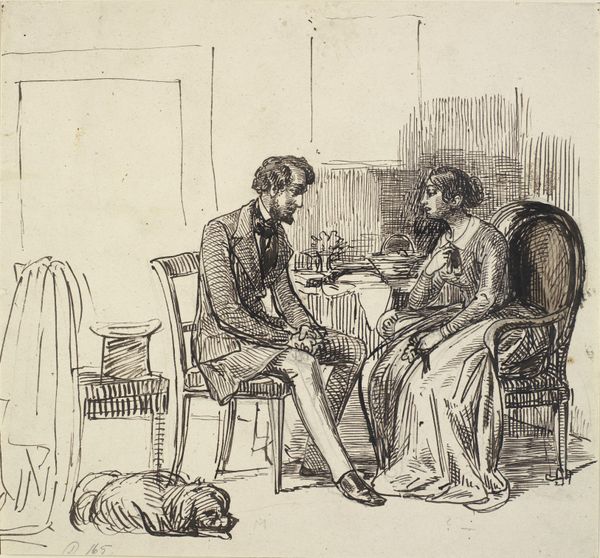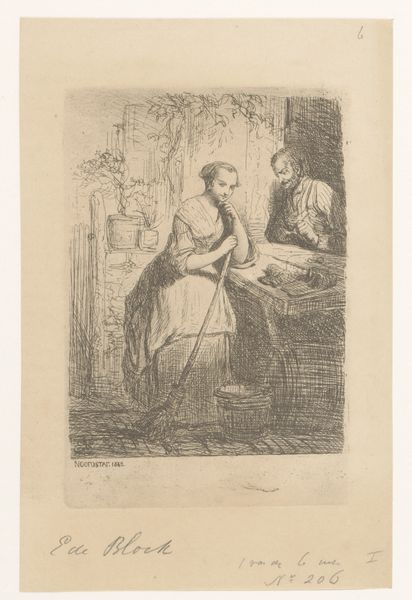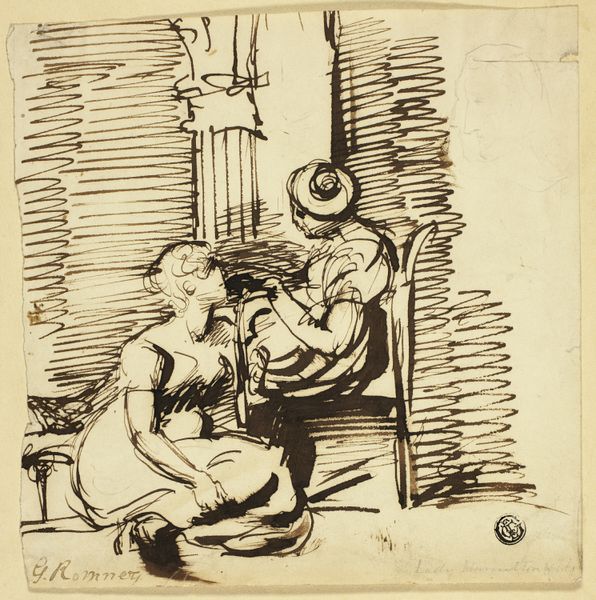
drawing, ink, pen
#
portrait
#
drawing
#
figuration
#
ink
#
pen
#
genre-painting
Dimensions: 119 mm (height) x 122 mm (width) (bladmaal)
Curator: Before us, we have Wilhelm Marstrand’s “Kurmageri til kokkepigen,” dating roughly between 1810 and 1873. It’s an ink and pen drawing, currently held at the SMK, Statens Museum for Kunst. Editor: My immediate impression is of domestic unease. The rough lines convey a sense of unspoken tension, perhaps in a state of conflict or perhaps negotiation. It feels like a charged moment. Curator: The title, which translates to "Courting the Cook," suggests a power dynamic tinged with class distinctions, a recurring theme in Marstrand’s work. The cook is rendered as the agent holding a knife while the man bows with deference, potentially wanting more. Editor: I see that, too, especially how the lines around her form are so firm, almost severe, especially when juxtaposed with his sloping, curved stature. It does remind me that during this period, class lines were very much hardened by way of a gender divide and were a point of stress throughout households everywhere. It's rendered so beautifully with what seems to be very little work from the hand. The tools used seem very simple for such depth in messaging. Curator: The use of pen and ink is particularly striking, offering an intimate glimpse into a social tension through stark simplicity. Marstrand uses the medium to emphasize class dynamics while creating a complex portrayal of both individuals. Considering that he was deeply inspired by the social changes during this era, particularly the role and depiction of working-class people, this scene provides a potent reminder. Editor: Exactly, and that's why I’m so struck by the starkness of it. I see it as a reminder of the labor inherent in domestic life, the power relations embedded in these interactions and negotiations around services and duties being negotiated or avoided. What the material can convey becomes apparent and almost secondary; ink is inexpensive and immediate, which highlights the exchange that Marstrand is displaying here. The woman uses it but to what purpose, versus how and where the man does? Curator: Absolutely, and seeing it that way, from his chosen tools to his figures themselves, his decision to immortalize such mundane life moments helps shed light on broader issues concerning labor and value as it pertains to everyday interaction. Thanks to Marstrand's work here, we continue to address gender inequality throughout work today. Editor: Agreed. Seeing these materials utilized in the ways that they are is a beautiful but also chilling reminder of art's power to portray simple people with very hard situations that have long historical roots.
Comments
No comments
Be the first to comment and join the conversation on the ultimate creative platform.
